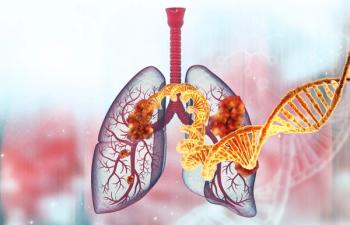
FDA Recalls Over 7000 Bottles of Duloxetine Because of Chemical Presence
Key Takeaways
- The FDA recalled duloxetine due to nitrosamine impurity, which can increase cancer risk with prolonged exposure above acceptable levels.
- Nitrosamines can form easily in drugs due to manufacturing processes, requiring complex testing and reference standards for detection.
The FDA announces a Class II recall for the lot #220128, which were reported to contain the presence of nitrosamine.
On October 23, 2024, the FDA announced a Class II recall for 7107 bottles of duloxetine (Cymbalta; Eli Lilly & Company) because it contained the presence of nitrosamine substance impurity, N-nitroso-duloxetine. This recall of the medication, which is used to treat mental health conditions such as anxiety and depression, was initiated on October 10.1,2 The recalled lot, #220128, was described by the FDA as 20-mg delayed-release capsules which expire in December 2024.2
People are exposed to trace amounts of nitrosamines, and they can be found in water, cured and grilled meats, dairy products, and vegetables.1,3 According to the FDA, nitrosamine impurities may increase the risk of cancer if people are exposed to them above acceptable levels and over long periods of time. Additionally, the FDA added that someone who is taking a drug that contains nitrosamines at or below the acceptable daily intake limits every day for 70 years is not expected to have an increased risk of cancer.1,3
These nitrosamines can sometimes be present in drugs or medications because of the manufacturing process, its chemical structure, or the conditions in which it is stored and packed. Nitrosamines may also be formed as food and drugs are processed in the body.3 The Class II classification means that exposure may trigger temporary or medically reversible adverse health consequences.1,3
In an interview, Edwin Gump, PhD, vice president of the Small Molecules Department at US Pharmacopeia, explained that nitrosamines are “really tricky” because they can be formed through simple chemistries. Because they appear in nature, they can form very easily.4
"Manufacturers have a responsibility to evaluate their processes and their products and look for chances where they could have a risk of nitrosamines. So, if there's a risk present, then manufacturers need to dig in and do more, which might include testing their products to confirm that there's no presence of nitrosamines...we're talking about really ultratrace levels, part per million, part per billion, so these are not easy analyses to perform. They require highly complex analytical equipment, and with any test, you need to kind of have what's the control to that test," said Gump in the interview. "People can think of these nitrosamine reference standards like a control standard. These are highly characterized materials that manufacturers can now use in their tests to ensure that when they perform that test, the test is accurate, the test is precise, that they are detecting to the appropriate levels that they need to control for the presence of nitrosamines."4
Gump emphasized the importance that experts need to do their part in order to ensure nitrosamines or other impurities related to quality or processes are taken care of, letting people be confident when relying on their medications. Patients should not have to feel concerned they are ingesting harmful materials.4
Other medications recalled because of nitrosamines include over 12 million bottles of blood pressure-lowering drugs, such as valsartan and losartan, which have been removed from the market since 2018. Additionally, the same family of contaminants have also triggered recalls of the heartburn drug famotidine (Zantac; Sanofi), the diabetes drug metformin (Fortamet; Ajanta Pharma), and the smoking cessation medication varenicline (Chantix; Pfizer).1
The FDA recommends that those who may have medications with potential nitrosamine to stop taking them. Patients are also advised to speak with their health care professionals about alternative treatment options or any concerns they may have. Further, health care professionals are also encouraged to educate patients about potential nitrosamine impurities if clinically appropriate. Medications can continue to be dispensed if from a manufacturing lot that was not recalled.1,3
REFERENCES
USA Today. FDA recalls more than 7,000 bottles of antidepressant over a possible cancerous chemical. News release. October 23, 2024. Accessed October 23, 2024. https://www.usatoday.com/story/news/health/2024/10/23/fda-duloxetine-recall-2024/75804668007/
US Food & Drug Administration. Enforcement Report. Accessed October 23, 2024. https://www.accessdata.fda.gov/scripts/ires/?Product=210449
US Food & Drug Administration. Information about Nitrosamine Impurities in Medications. Accessed October 23, 2024. https://www.fda.gov/drugs/drug-safety-and-availability/information-about-nitrosamine-impurities-medications#updates
Expert: Nitrosamines ‘Can Slip Through the Manufacturing Process,’ Making Reference Standards Essential to Avoid This Carcinogen in the Drug Supply Chain. Pharmacy Times. June 29, 2021. Accessed October 23, 2024. https://www.pharmacytimes.com/view/expert-nitrosamines-can-slip-through-the-manufacturing-process-making-reference-standards-essential-to-avoid-this-carcinogen-in-the-drug-supply-chain
Newsletter
Stay informed on drug updates, treatment guidelines, and pharmacy practice trends—subscribe to Pharmacy Times for weekly clinical insights.















































































































































































































